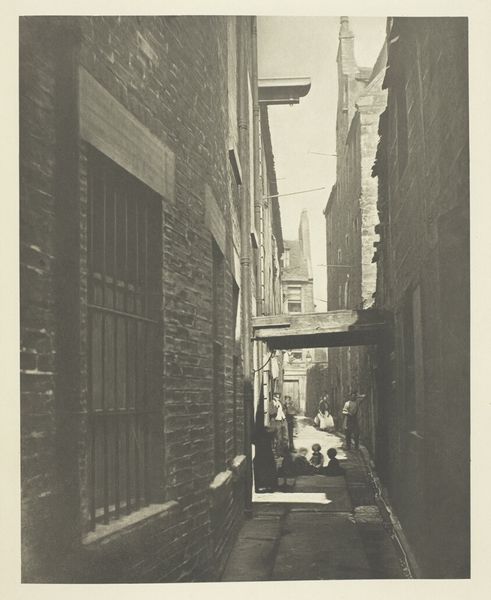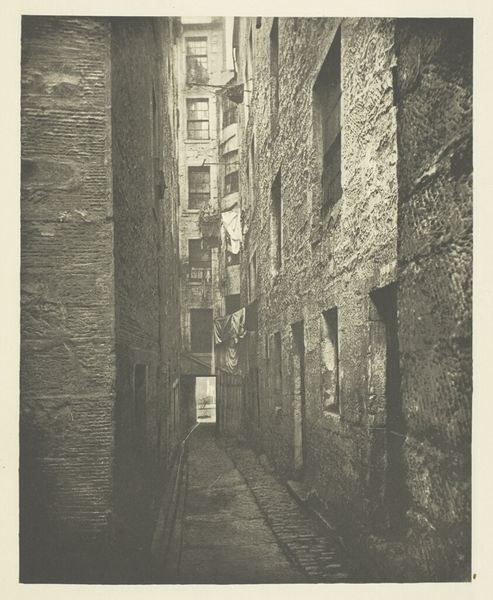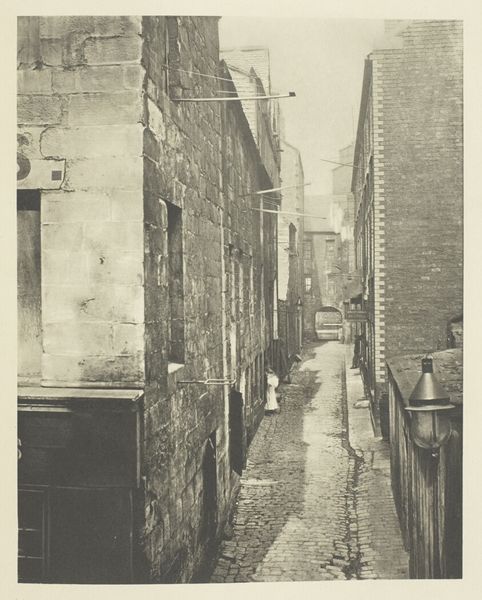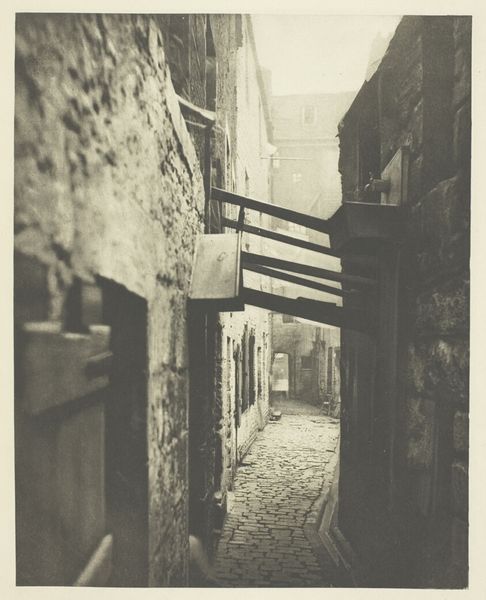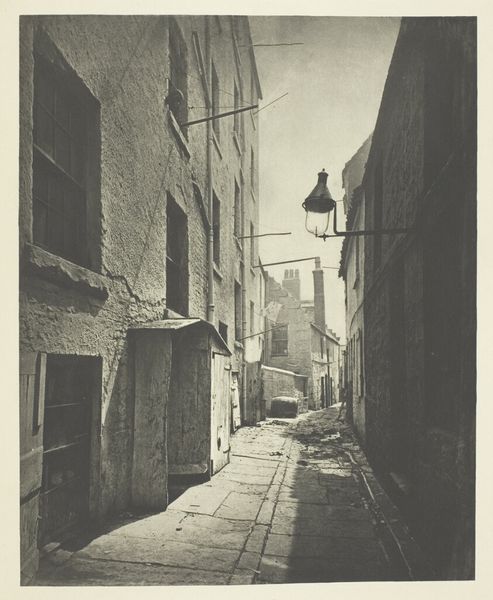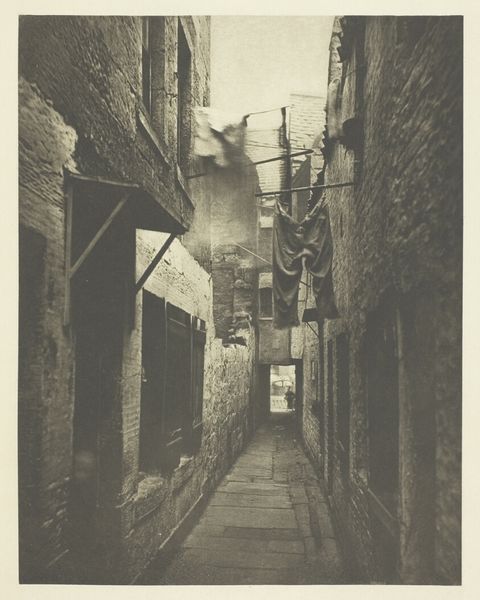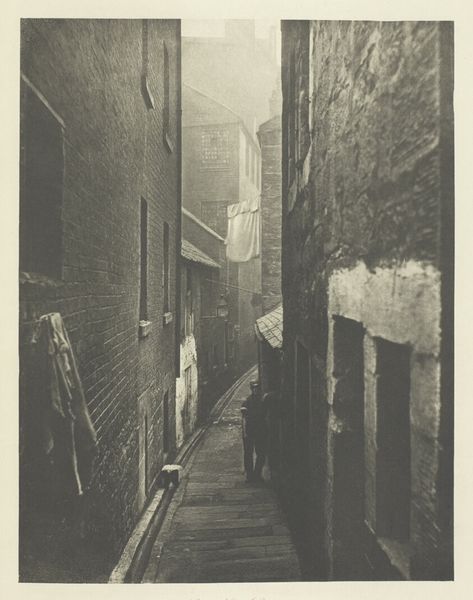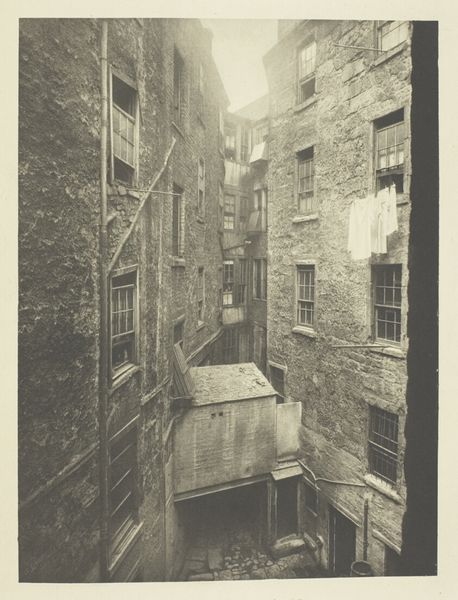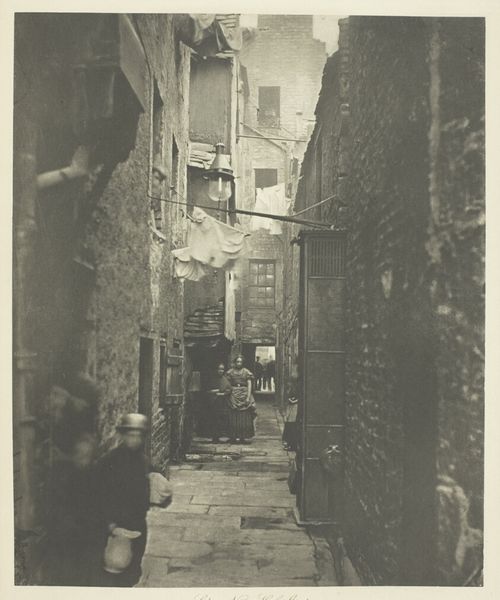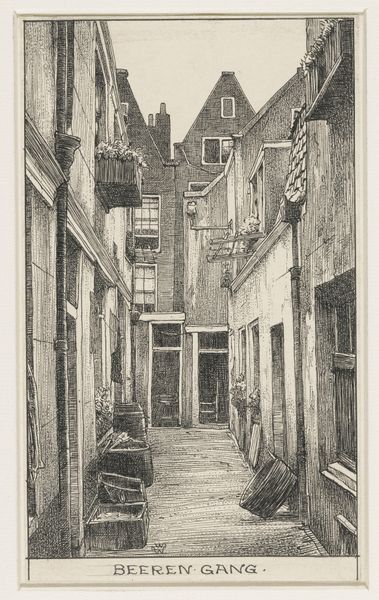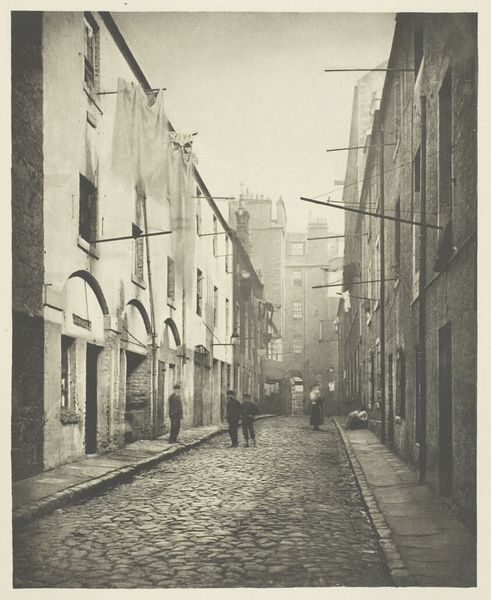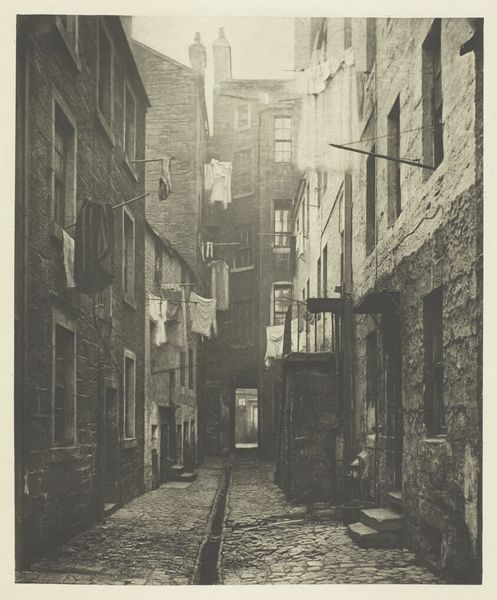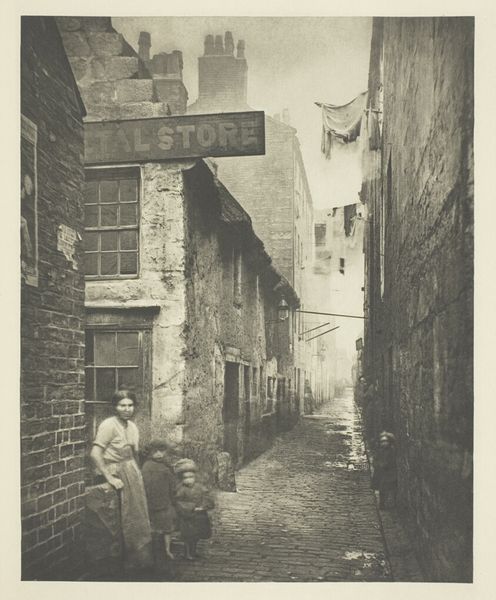
photography
#
perspective drawing
#
aged paper
#
16_19th-century
#
wedding photography
#
studio lighting mockup
#
old engraving style
#
photography
#
wedding around the world
#
pen-ink sketch
#
aspect ration
#
natural palette
#
warm natural lighting
Dimensions: 22.1 × 17.4 cm (image); 38.2 × 27.2 cm (paper)
Copyright: Public Domain
Curator: Looking at this photograph, there’s a palpable weight to it, a sense of compression and confinement. Editor: Indeed. This is "Close No. 65 High Street" by Thomas Annan, taken in 1868. Annan was commissioned to document the slums of Glasgow before they were demolished for urban improvement. Curator: The "urban improvement" is what gets me. These projects often displaced communities, and Annan's photograph inadvertently became a record of that social upheaval. Who was considered "undesirable," and who benefitted from this transformation? We have to look at the intersectional aspects. Editor: Absolutely. Note the texture, though; the cobblestones, the weathered walls…one can almost feel the dampness. His process involved creating these incredibly detailed albumen prints; considering the primitive cameras and the constraints of the medium at the time, this kind of resolution demonstrates amazing labor and technical skill. Curator: And what labour went into these buildings and this street? The human presence is almost haunting – those figures at the end of the alley look so ghostly and the washing line hints at daily toil, connecting it all to the harsh realities of industrial capitalism. What were the economic conditions of the residents, and how were they impacted by factors like gender, ethnicity, and access to resources? Editor: It’s difficult, if not impossible, to miss that Annan chose to present this alley as the focus. I think he recognized something visually arresting, perhaps even beautiful in the raw material of the city's margins, as you stated about those human figures at the end. His meticulous method turns this reality into a compelling image that still resonates today. Curator: But what kind of labor did *he* find beautiful? Annan’s own privilege undoubtedly influenced his framing of this reality. We should always acknowledge the photographer’s role as a potential filter, consciously or unconsciously reinforcing existing power dynamics. Editor: I agree we need to acknowledge Annan’s own power dynamic; it allows us to examine not only the work but the hands that constructed the images, too. The material facts of both informs on the final, resulting impact of its reproduction. Curator: It's so critical for art to create discussions that touch upon these kinds of considerations, providing platforms to highlight disparities. Editor: It indeed opens an aperture into the history of the materiality, society, and its inhabitants from within a complex nexus, reminding us of the intricate processes that define the human existence.
Comments
No comments
Be the first to comment and join the conversation on the ultimate creative platform.
